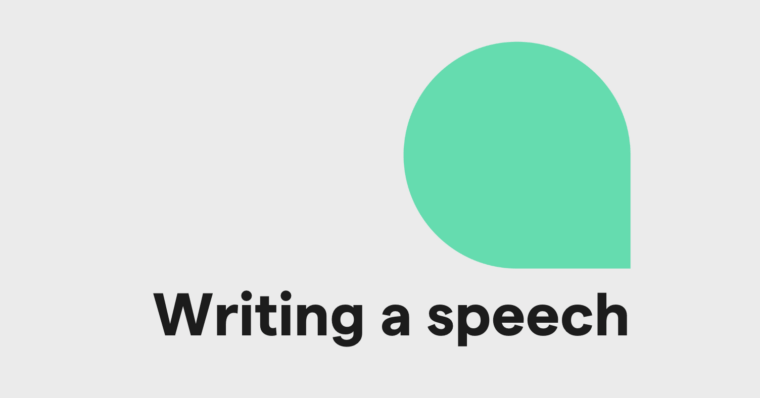
- An apology letter is a written acknowledgment of how the writer’s behavior or words adversely affected another person or group.
- An effective apology letter involves acknowledging your action’s impact and atoning for it (or at least attempting to do so), in order to help restore trust and communication.
- Use apology letters when making amends for a mistake in both personal and workplace situations.
- The best apology letters include a recognition of the recipient’s experience and feelings, an understanding of how the writer’s actions caused them, and a plan to do better in the future.
- You should always avoid blame, defensiveness, and self-pity when writing an apology letter
We all make mistakes, and sometimes, those mistakes offend others. Depending on the situation, a simple “I’m sorry” might not be enough to make up for the hurt you caused by offending somebody or letting them down—you may need to write an apology letter.
Here, we’ll walk you through how to write an apology letter that communicates genuine remorse and intent to repair the relationship with the individual you’ve offended. We’ll show you an effective apology letter format and examples of effective language from the best apology letters.
Table of contents
When to write an apology letter
Tips for writing the best apology letters
What to avoid in an apology letter
Knowing how to write an apology letter is an essential skill
How to write an apology letter FAQs
What is an apology letter?
An apology letter is a letter that expresses regret for its writer’s mistake, offense, or other harm they’ve caused to another person or group of people. Its purpose is for the writer to acknowledge their responsibility for the offense they’ve caused and to validate the recipient’s experience and feelings. The goal is to restore a positive relationship between the writer and the recipient by affirming how the writer will repair the damage they’ve caused and avoid similar behavior.
When you write an apology letter, remember that it’s not a tool for justifying your actions or excusing yourself. The letter is for the recipient and is meant to address your actions and their feelings.
When to write an apology letter
Write an apology letter when you’ve caused offense or harm that requires more rectification than a verbal “I’m sorry.”
For example, you may write an apology letter to a friend or loved one you’ve insulted. Similarly, you might write an apology letter to a colleague whose work you inadvertently sabotaged or took credit for without recognizing them. Even if you didn’t directly cause another’s hurt but contributed to or exacerbated it, writing an apology letter may be an appropriate course of action.
Whether the apology letter is meant for personal or professional contact, the same guidelines apply:
- Acknowledge what happened
- Validate the recipient’s feelings
- Express remorse for your actions
- Note how you’ll rectify the situation
In a professional setting, use the same professional tone you’d use in any other piece of professional writing. The tone may be less formal for a personal apology letter, but it should nonetheless express sincere remorse. Do not undermine your message with slang, emoji, or attempts at humor.
The goal is to express sincere remorse for your actions and acknowledge the harm you caused the recipient. Ideally, writing an apology letter is the first step toward repairing your relationship with them.
Tips for writing the best apology letters
The best apology letters all share a few characteristics. As you write an apology letter, keep the following tips in mind:
1 Use an appropriate tone
An apology letter is not the place for jokes, glib language, or chatspeak. Write it in a calm, respectful tone that adequately communicates your remorse for your behavior. It does not have to be overly formal, but it should take the same tone with which you’d express a heartfelt apology in person.
2 Offer a sincere apology
At the beginning of your apology letter, write “I’m sorry for … ” or “I apologize for … ” followed by what you’re specifically remorseful about. Expressing sincere remorse upfront shows humility and awareness about how you’ve affected the other person.
3 Acknowledge the impact
After offering a sincere apology, acknowledge how your actions impacted the letter’s recipient. Here’s an example:
Accepting responsibility for how you impacted others demonstrates that you understand why they’re hurt, upset, or disappointed. This is a critical step because it validates their feelings, which can help them feel heard and seen.
Although explaining why you behaved the way you did can be tempting, be cautious with this. Depending on the scenario, your reason might not be relevant, and discussing it could come across as you making an excuse. If you choose to explain yourself, keep it brief and focus on why your action was a mistake.
4 State how you’ll change your behavior
As the old saying goes, “The best apology is changed behavior.” In your apology letter, clearly state the actions you’ll take to rectify the situation. Don’t ask the recipient to tell you what they want you to do—the onus is on you to change your behavior. A few examples of this include:
Sometimes, this section is a proposal rather than a concrete plan. In this case, ask the recipient for their thoughts about your suggestion.
5 Provide reassurance
Express your desire to rebuild from this experience together. Assure them that you’ve learned from your mistake. This section should be concise and honest, with the goal of communicating that you understand the recipient and empathize with them.
6 Request forgiveness
The last step in writing an apology letter is expressing a genuine hope that the recipient will forgive you. Remember that an apology letter doesn’t guarantee forgiveness; it’s the first step to potentially recovering lost faith in an important relationship.
Don’t demand or assume forgiveness with statements like “Please forgive me” or “You’ve got to understand.” Instead, request that they forgive you, and remember that forgiveness is on their terms. Here are a few examples of appropriate requests:
What to avoid in an apology letter
Avoid blaming your actions on the recipient or anybody else in an apology letter. Also, avoid minimizing the effects of your actions and demanding forgiveness. As a general guideline, keep it objective and focused on the recipient.
Assigning blame
Examples of assigning blame include:
This kind of language puts the onus on the other person; it suggests that the recipient could’ve “done better” instead of the writer taking responsibility for their own actions. Shifting blame onto third parties and being defensive about your actions do the same thing, so avoid these in your apology letter.
Minimizing the impact
Do not attempt to minimize your impact on the recipient with language like “it’s really not a big deal” or “this kind of thing happens all the time.” It doesn’t matter if similar scenarios happen regularly or if you think your actions weren’t a big deal. If the recipient was offended or harmed, it’s a big enough deal to write an apology letter.
Long-winded explanations
Keep your apology letter brief. There’s no need to rehash the incident or give a long backstory explaining why you behaved the way you did. If you feel you need to include context to explain what happened, keep it short and objective.
Self-pity
Statements like “I’m such a fool” and “I always screw these things up” don’t actually help the recipient; they simply excuse your actions. Though it can be tempting to use this kind of language to take responsibility for your actions, you’re best off simply acknowledging them without calling yourself names or denigrating yourself.
Insincere apologies
Words to the effect of “that’s not how I meant it” or “people make mistakes” invalidate the feelings of the other party. Regardless of your intent, acknowledge your culpability for the outcome. Otherwise, your apology is not productive.
Passive-aggressive tone
You might also feel angry or upset with the recipient, but that doesn’t matter. Don’t let your personal feelings affect your tone in your apology letter. This extends to using a defensive or passive-aggressive tone in an attempt to quell the conflict.
Here are a few examples of passive-aggressive phrases:
Sarcasm and statements that can appear to be mocking the recipient or the situation are also unhelpful and cruel.
Demanding forgiveness
As mentioned earlier, demanding forgiveness in your apology letter isn’t right. Instead, ask for forgiveness in a way that gives the recipient room to forgive you on their terms and timeline.
Rushing the process
Last, don’t expect immediate forgiveness, or any quick response at all. The recipient may need to reflect on the situation and process their feelings. By all means express your desire for reconciliation, but word your apology letter in a way that gives the recipient time.
Apology letter format
An apology letter format is similar to the format for other personal letters. When you write an apology letter, include these sections:
Start with a salutation
Begin your letter with a salutation that addresses the recipient directly, like:
- Dear [Recipient’s name]
If you don’t know the recipient’s name, or if you’re writing a letter to a group, you can use a salutation like:
Write the body of your apology letter
The body of an apology letter typically contains one to three paragraphs. Refer back to the points to include, such as a sincere apology and a plan to avoid similar situations in the future. Different situations require different levels of detail, so use your judgment to determine how much detail to include in your apology letter’s body.
Close the apology letter
Finish your apology letter with a closing reiterating your remorse and expressing hope for a positive future. Use language like:
- Again, I sincerely apologize.
- I hope we can move forward from this situation.
Follow the closing with an appropriate sign-off like sincerely or all the best.
Sign your name
Finish the letter by signing your name. If it’s an email or another type of digital communication, type your name rather than relying on your email signature. Taking the time to write or type your name personalizes the message, which communicates that you took the time to write a thoughtful apology letter.
Apology letter samples
Below are examples of concise apology letters in different life situations.
Sample apology letter to a manager or colleague
Dear Mr. Mendoza,
I apologize for my rude tone while talking to our client during yesterday’s video call. Upon further reflection, I recognize that I not only presented myself unprofessionally but also disrupted the meeting’s productivity by creating tension. I see that I’ve put the team and the company in a difficult situation.
I’ve privately reached out to my team members who were present to personally apologize for putting them in an uncomfortable spot. I’m committed to doing better in high-pressure situations and learning conflict-resolution strategies to help me communicate according to our company standards. I sincerely apologize for my mistake and will, of course, accept the consequences of my actions.
Sample apology letter to a friend
Dear Karis,
I’m so sorry about the thoughtless comments I made about your choice to work as a freelancer. They were judgmental and hurtful, and I deeply regret making them.
You trusted me by sharing your plans to pivot careers, and I broke that trust. Instead of being a supportive friend, I projected my own fears onto you. That was wrong of me, and it’s inexcusable.
After reflecting on it more, I realized that I cut you off so many times while you tried to update me about your career transition. Moving forward, I promise to be respectful to you by listening with an open mind and open heart.
I’m truly sorry for the snide remarks—you didn’t deserve that, and our friendship means everything to me. I’d love to pick up our conversation about your plans when we see each other again.
Sample apology letter for inconvenience or missed appointment
Dear Grant,
I’m very sorry for missing our meeting yesterday. I know your time is valuable, and by missing our agreed-upon meeting, I wasted your time.
I overbooked myself yesterday and did not realize until it was too late. In the future, I’ll be more mindful about scheduling meetings and ensure that I have no conflicts before booking them. I hope you’ll consider meeting with me again in the future. I am very interested in the work you do and think there could be some great collaboration opportunities between our businesses.
Sample apology letter to a client or customer
Dear Greg,
We apologize for the experience you had at our restaurant last Saturday. When you reserved a table for seven, you rightfully expected there to be a table for your party ready, and we let you down by not providing the table you booked.
This was a miscommunication error on our staff’s part, and for that, we’re truly sorry for causing your family stress and inconvenience when you visited O’Malley’s. We hope you’ll consider dining with us in the future. Please accept our offer to prioritize your party for a reservation at any point in the next six months and 50 percent off your bill. Again, we truly apologize for our mistake, and we want to make things right.
Knowing how to write an apology letter is an essential skill
Being able to write an effective apology letter isn’t a talent—it’s a skill. That means you can learn how to do it and hone your skills over time. Remember, an apology letter is more about the recipient than you, so when you write an apology letter, think about how you would like to be treated after you’ve been offended or wronged. Approaching this process with the goals of sincerity and improving your relationship will make your message stronger and more effective.
How to write an apology letter FAQs
What should an apology letter include?
An apology letter should include the following:
- A direct, genuine apology
- Acknowledgement of the recipient’s feelings
- A statement expressing your plan to change your behavior or make the situation right
- A request for forgiveness
What is the purpose of an apology letter?
An apology letter aims to recognize how your actions have harmed another person or group of people, and to express genuine remorse and atonement for these actions.
How do you write a good apology letter?
To write a heartfelt apology letter, focus on the recipient’s feelings and experience. Avoid inadvertently using the letter to justify yourself and your perspective. You can achieve this by writing a clear and concise apology for the specific offense and acknowledging your responsibility in the situation. Then, describe how you’ll avoid old patterns in the future.
When should you use an apology letter in the workplace?
- When you’ve undermined a colleague’s work
- When your actions could have compromised a relationship with a partner, client, or vendor
- When you’ve offended or harmed a customer or client
- When you’ve offended or harmed a colleague






